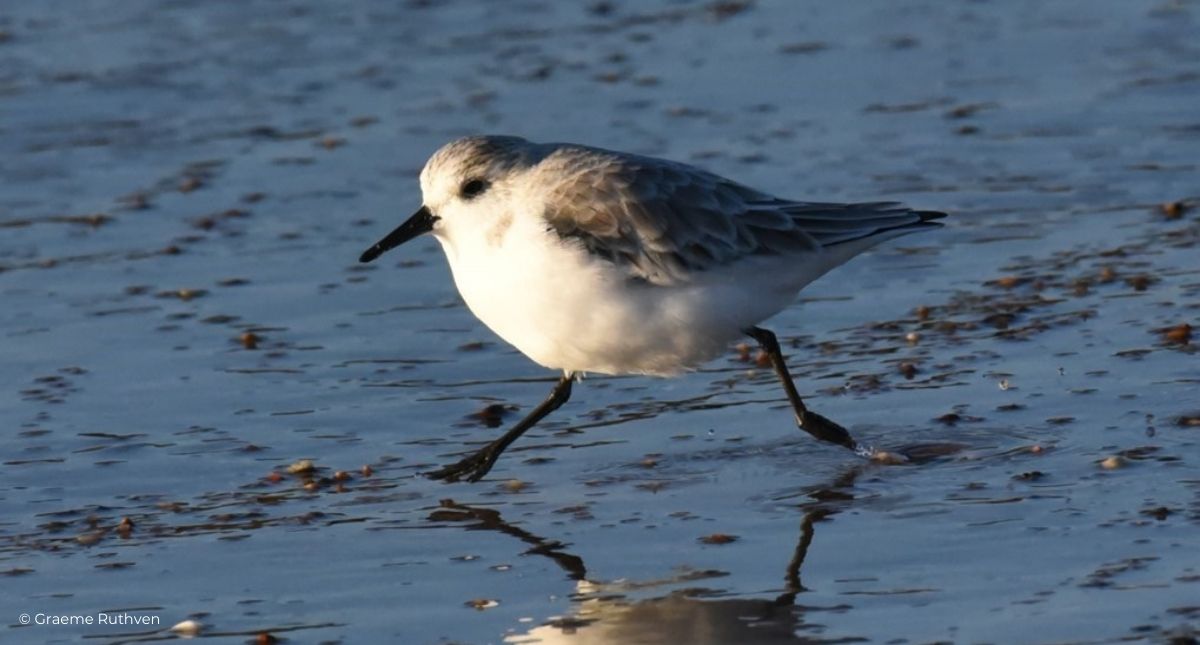Migrating birds have long used the Isle of Wight as a pitstop on their route to warmer climes. Gracing the Island’s winter landscapes, our varied habitats, from coastal cliffs to ancient woodlands, host an array of winter migrants. With the annual RSPB Big Garden Bird Watch just around the corner, now is the perfect time to get involved and see what you can spot…

In the build-up to the Big Garden Birdwatch, taking place over the weekend of 26-28 January 2024, this early winter time provides superb birdwatching opportunities. Thousands of Dark-bellied Brent Geese, newly arrived from Siberia, can be seen on the shorelines and coastal wetlands, joined by other wildfowl such as Teals, Shovelers, Wigeons, Gadwalls and Pintails.
A rich array of wading birds feed on the intertidal sandflats and saltmarshes, from the diminutive Sanderlings, Ringed Plovers and Dunlins scurrying around the tideline, to the longer-legged Black-tailed Godwits, Oystercatchers and Curlews. The rockier rugged coasts are the haunt of Turnstones and a few Purple Sandpipers, while Golden Plovers and Knots whirl in shimmering flocks as they fly into high tide roosts.
Tidal pools are favoured by feeding Grey Herons and Little Egrets, while an increasing number of Great White Egrets and Cattle Egrets, now established as breeding birds in the UK, are more likely encountered on the coastal marshes, with occasional sightings of Glossy Ibises.
The waters of the Solent attract divers, grebes and sea-duck in winter. Great Northern and Red-throated Divers, Great Crested and Slavonian Grebes can be seen close offshore, especially at high tide. Small flocks of Common Scoters and Eiders ride the waves and there is always the chance of spotting scarce winter visitors such as Long-tailed Ducks and Velvet Scoters.
If you are lucky, you might spot a resident White-tailed Eagle soaring across the skies on their huge 2.5-metre wingspans. Other magnificent birds of prey here on the Island include Peregrines, Merlins and Marsh Harriers. Short-eared Owls hunt over the grasslands during daylight and as dusk descends, they may be joined by Barn Owls and Little Owls.
.jpg)
Fieldfares and Redwings, known as 'winter thrushes', which have flown in from Scandinavia and northern Europe, home in on berry bushes and windfall fruit, competing with resident Mistle Thrushes, Song Thrushes and Blackbirds, alongside overwintering Blackcaps and Chiffchaffs.
Winter is a time when larks, sparrows, finches and buntings flock together, especially around wild bird cover crops, field edges and hedgerows, as they search for seed. The rippling calls of Skylarks are as joyous as their songs and the constant chattering of Linnets blends with the twitter of Goldfinches and the `wheezes’ of Greenfinches. Many of the finches and sparrows will be recorded during the Big Garden Birdwatch, taking advantage of bird table seed, peanut feeders and fat balls, along with members of the Tit family, Starlings and thrushes.
Some of our favourite places for birdwatching on the Island include the east and west bird hide at Newtown managed by the National Trust, as well as Alverstone Mead overlooking Brading Marsh. A walk along a north coast beach is a good bet too, looking out towards The Solent to see what’s around as well as an inland walk along the banks of the River Medina, where at this time of year, you may well spot a Kingfisher!
For more information visit rspb.org.uk or check out some of these walking routes to try. You can read more about the Wildlife on the Isle of Wight here.



 to add an item to your Itinerary basket.
to add an item to your Itinerary basket.





.png)

